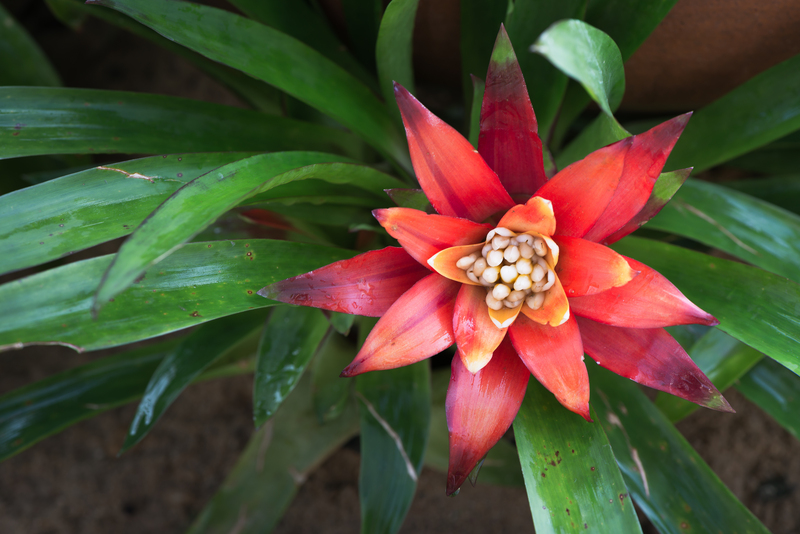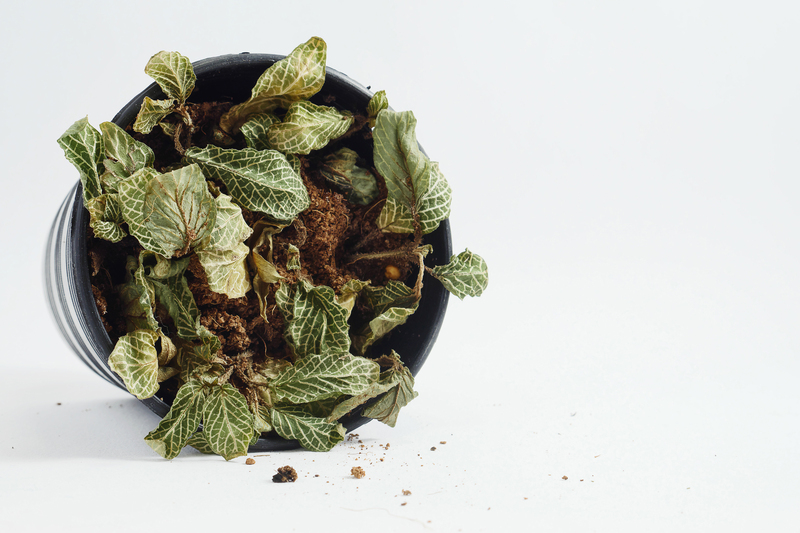Discover Essential Techniques for a Flourishing Herb Garden
Posted on 24/06/2025
Are you dreaming of harvesting your own fresh basil, rosemary, and thyme right outside your kitchen door? Whether you're a seasoned gardener or just beginning your green-thumb journey, growing a thriving herb garden delivers both satisfaction and bounty. In this comprehensive guide, discover vital techniques and tips to ensure your herb garden flourishes season after season. Learn the secrets behind selecting, planting, and maintaining healthy herbs that will add fresh flavor and aroma to your home cooking.
Why Grow Your Own Herb Garden?
There are countless reasons to start an herb garden. Herbs not only enhance your dishes, but also offer health benefits, reduce grocery bills, and beautify your living space. Having a personal supply of home-grown herbs ensures that you always have fresh, pesticide-free ingredients right at hand.
- Saves money on store-bought herbs.
- Encourages healthy eating with easy access to flavor-packed greens.
- Adds aesthetic value indoors or outdoors.
- Creates a relaxing and vibrant hobby for all ages.
- Boosts pollinators like bees and butterflies in your garden.

Choosing the Right Location for Your Herb Garden
Sunlight exposure is crucial for most culinary herbs. For a flourishing herb garden, select a spot that receives at least 6 to 8 hours of direct sunlight daily. Windowsills, balconies, patios, and gardens all make suitable locations. Always consider your local climate and available space when choosing the best site.
- Outdoor gardens: Ideal for those with ample yard space. Raised beds, containers, or dedicated beds are all suitable for herbs.
- Indoor gardens: Perfect for apartment dwellers. Use sunny windowsills or invest in grow lights for low-light conditions.
- Balconies & patios: Container gardening makes efficient use of limited space and allows easy mobility.
Soil Preparation: The Foundation for Herb Success
Healthy, well-prepared soil is the key to any productive herb garden. Before planting, assess your soil quality for proper drainage and fertility.
- Good drainage is vital: Herbs hate having "wet feet." If your soil is heavy clay, consider raised beds or containers.
- Enrich with organic matter: Blend in compost or well-rotted manure to boost nutrients and enhance soil structure.
- Test soil pH: Most herbs favor a pH between 6.0 and 7.5. Simple home test kits are available at garden centers.
- Avoid synthetic fertilizers. They can promote rapid, weak growth and diminish flavor.
Choosing the Best Herbs for Your Garden
Picking the right assortment makes all the difference in reaping a bountiful herb harvest. When selecting herb varieties, ask yourself: which herbs do you cook with most frequently? Are you growing herbs for tea, culinary, medicinal, or ornamental use?
Top Herbs for Beginners
- Basil: A kitchen staple, thriving in warm weather and full sun.
- Mint: Easy to grow but best grown in containers as it spreads aggressively.
- Parsley: Versatile, tolerates partial shade, perfect for salads and garnishes.
- Rosemary: Hardy and drought-tolerant, offers evergreen flavor year-round.
- Chives: Perennial, low maintenance, adds a mild oniony taste.
- Thyme: Compact and drought-hardy, excellent for ground cover and savory dishes.
- Cilantro: Enjoys cooler weather and grows rapidly from seed.
- Dill: Tall, aromatic, ideal companion for cucumbers and seafood dishes.
Effective Planting Methods for a Prospering Herb Garden
The technique you use to plant herbs impacts their growth and resilience. Start from seed, plant transplants, or propagate from cuttings, depending on your experience and herb choices.
Starting Herbs from Seed
- Sow seeds in light, well-drained starting mix.
- Keep soil consistently moist (not soggy) until seeds germinate.
- Once seedlings have two sets of true leaves, thin out the weakest and transplant as needed.
- Many herbs like basil, chives, and parsley germinate quickly indoors.
Transplanting & Direct Sowing
- Transplants: Ideal for slow-growing herbs like rosemary. Space according to plant requirements.
- Direct sowing: Best for fast-growing annuals such as dill or cilantro, especially in spring.
- Gently water in transplants and protect from strong sun until established.
Propagation from Cuttings
- Take 3-4 inch cuttings from healthy plants, remove lower leaves, and root in water or moist soil.
- Great for multiplying perennial herbs such as mint, oregano, and thyme.
Watering Wisdom: How to Hydrate for Healthy Herb Growth
Consistent and appropriate watering ensures that herbs establish healthy root systems and avoid common diseases. Both under- and overwatering pose risks to a flourishing herb garden.
- Water deeply but infrequently: Let the top inch of soil dry between waterings to prevent root rot.
- Time of day matters--water early in the morning or late afternoon to minimize evaporation.
- Use a soaker hose or watering can with a gentle nozzle to avoid damaging delicate foliage.
- Reduce watering during cooler months or rainy periods for outdoor gardens.
Essential Maintenance for a Productive Herb Garden
Regular care is key to a lush, continuous harvest. Follow these essential maintenance techniques:
- Prune regularly: Pinch back growing tips to encourage bushiness and prevent flowering (bolting), especially for basil, mint, and cilantro.
- Weed weekly: Competition for nutrients and water can limit herb success.
- Mulch: Apply a thin layer of straw or shredded leaves to retain moisture and reduce weeds.
- Fertilize sparingly: Use compost tea or diluted organic fertilizer once a month during active growth.
- Keep an eye out for pests and diseases. Natural remedies like neem oil or insecticidal soap offer safe solutions.
Harvesting for Flavor and Future Growth
Harvesting at the right time maintains your vibrant herb garden and maximizes flavor. The general rule is to start harvesting once plants are well-established but before flowering.
- Morning harvest: Pick herbs after dew has dried but before midday heat for best taste.
- Pinch and prune: Always snip above a leaf pair to encourage further growth.
- Avoid stripping all leaves--never harvest more than one-third of a plant at a time.
- Regular harvesting stimulates new, fresh foliage production.
Companion Planting and Pest Management
Smart use of companion planting can protect your herb garden and boost yields. Some herbs act as natural pest deterrents and attract beneficial insects.
- Basil repels aphids, mosquitoes, and tomato hornworms.
- Chives and garlic deter aphids and Japanese beetles.
- Mint keeps ants and flea beetles away but should be contained.
- Dill attracts ladybugs and pollinators.
- Interplanting herbs with vegetables maximizes garden efficiency and health.
If pests become persistent, try physical removal, natural sprays, or introduce predators such as ladybugs. Consistent observation is the best prevention!
Preserving and Storing Your Home-Grown Herbs
Preserve your herb harvest in a variety of ways to enjoy flavors year-round:
- Drying: Hang small bunches upside down in a warm, dark, well-ventilated area.
- Freezing: Chop herbs and freeze in ice cube trays with water or olive oil.
- Infusing: Combine herbs with vinegar or oil for culinary use.
- Herb butters and pestos are perfect for basil, parsley, and chives.

Common Challenges and How to Overcome Them
- Bolting: Flowering signals the end of an herb's productive phase. Prevent it by harvesting regularly.
- Yellowing leaves: Usually due to overwatering or nutrient imbalance. Adjust watering first, then feed with a balanced organic fertilizer.
- Pest attacks: Address early--inspect plants, use barriers, or introduce natural predators.
- Poor growth: Often linked to lack of sunlight, crowded roots, or poor soil. Relocate or refresh soil as needed.
Frequently Asked Questions
How much sunlight do herbs need?
Most culinary herbs thrive on 6-8 hours of sunlight each day. Some like mint and parsley tolerate partial shade.
Can I grow an herb garden indoors?
Absolutely! Use a sunny windowsill or supplement with grow lights for year-round, indoor herb gardening.
What are the easiest herbs to grow?
Basil, chives, parsley, thyme, and mint are beginner-friendly and adapt well to containers or garden beds.
How often should I water my herb garden?
Water when the top inch of soil is dry. Overwatering is a common mistake--herbs prefer less frequent, deep watering.
Conclusion: Reap the Rewards of an Abundant Herb Garden
Growing a flourishing herb garden offers a treasure trove of culinary delight, natural health, and sensory beauty. By applying these essential gardening techniques--from site selection and soil care to regular maintenance and preservation--you'll enrich your home and kitchen for years to come.
Ready to get started? Embrace these tried-and-true strategies, and soon you'll enjoy the convenience, freshness, and pride that comes from a thriving, abundant herb harvest at your fingertips.
Happy gardening!



